SteamWorld Heist is out on 10th December on the 3DS eShop, and is a title that's intrigued us from the moment it was first revealed. Its predecessor SteamWorld Dig took off on the 3DS, gaining critical acclaim and a legion of dedicated fans, in the process also helping boost developer Image & Form's business and spawning a host of ports across various systems, including Wii U.
With Dig proving such a success it must have been tempting to turn in a standard sequel, yet Heist is a follow-on; the IP is the same, but the gameplay and setting are entirely different. Were this in the retail scene it would be a surprising move, yet in the download arena it's perhaps to be expected; smaller companies are often bold and ambitious in their follow-ups. Yet with the studio's expanding team and nearly two years of development behind the project the stakes are undoubtedly high.
To learn more about the project we caught up with Image & Form CEO Brjann Sigurgeirsson and development lead Olle Håkansson, who can each tackle their own respective areas of speciality. They give us an idea of the thinking and actions behind the scenes of SteamWorld Heist's development.
Olle Håkansson on Developing SteamWorld Heist
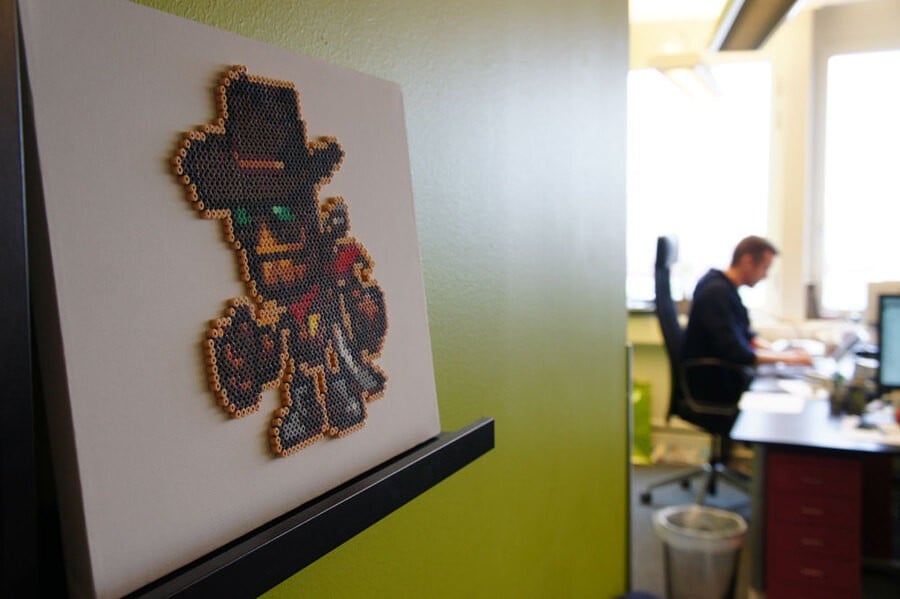
Can you outline the size of the development team, and some positives and negatives for that team size?
About 6 years ago, I started out making Image & Form's first SteamWorld title, SteamWorld Tower Defense. It took about three months to complete, with one and a half artists working with me on the project. It was a simple game and we didn't make a lot of money from it, but it was the most smooth production I've ever done.
Today, we're 17 people working full-time on a single game at a time. We have people working exclusively on PR, writing and game design. As you might have guessed, it's less smooth than before, but it's also pretty awesome.
The definite upside of having this many people on-board that we can make bigger, better and cooler games. Tower defense games are fun, but you've seen them before. You definitely haven't played a game like Heist before.
The downside with more people is that administration becomes more and more of a problem, and it's difficult to work efficiently. We've had to adopt a lot of new management techniques while making this game. It's boring but necessary work, and we have plenty of room left to improve.
Compared to previous projects within the company, how smoothly would you say development's progressed over the course of the whole project? Also, how long has this game been in development, overall?
Well, except that it took twice as long as planned, I'd say it went without hiccups! Yeah, it's been a bumpy road. We've worked 22 months to reach the first release of Heist. It has soaked up every penny we made from SteamWorld Dig. This was never the plan, but that's where we are right now.
This might sound like a cliché that every game developer spews out, but we don't release bad games. We hate playing them, we don't want to make them, and it makes very little sense to do so. Rather than "cutting our losses" and dumping something crappy a year ago, we kept on working until we could release something we are proud of. Again, we're there now.
We'll probably do a post-mortem with more details later on, but for now, we're just happy to be through the "worst" part!
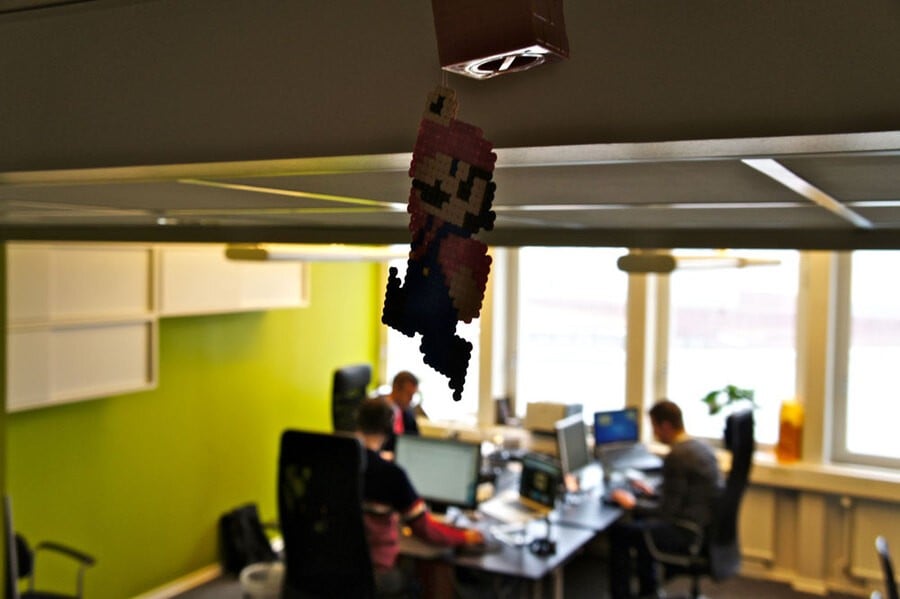
There's been a notable shift in approach, moving from a fairly non-linear resource-based title in the earliest PC build of SteamWorld Heist to a more structured experience in the final product. When did that change take place, and what prompted it?
Like all games we make, we start off with a huge, grand plan of the game, fully knowing that we'll probably cut out 80% of it before the game is done. Since we're treading new ground, we don't know what will work and what will not.
Our initial approach had a more open, sprawling world, with permadeath, roguelike influences and complex mechanics surrounding your space ship. It just didn't work; it felt slow and tedious, and it distracted from the core gameplay. We might've been able to fix it, but we were already seeing the signs of running over budget, so we made the decision to reign in on some of the crazy stuff.
And I'm glad we did. Crazy stuff in games is often interesting, but rarely fun in a lasting way. This way, we could focus on the core gameplay, while being able to tick off a few well-considered items from the crazy-list. Like shooting and looting; who would have thought that would make sense in a hat simulator like Heist? (A recurring in-joke with the number of hats we designed).
Has Heist, which is an entirely different genre from Dig, been easier or more challenging to develop than its predecessor? Can you explain the reasoning for this?
Definitely more challenging. Dig was tough, but we had a relatively clear picture of the end game. For Heist, we only knew the core gameplay, so there were a lot more unknowns to figure out. There's just more wrong paths to take, more pits to fall into. You wouldn't believe how many iterations we're gone through in the different systems of the game, like the loot system and level generation.
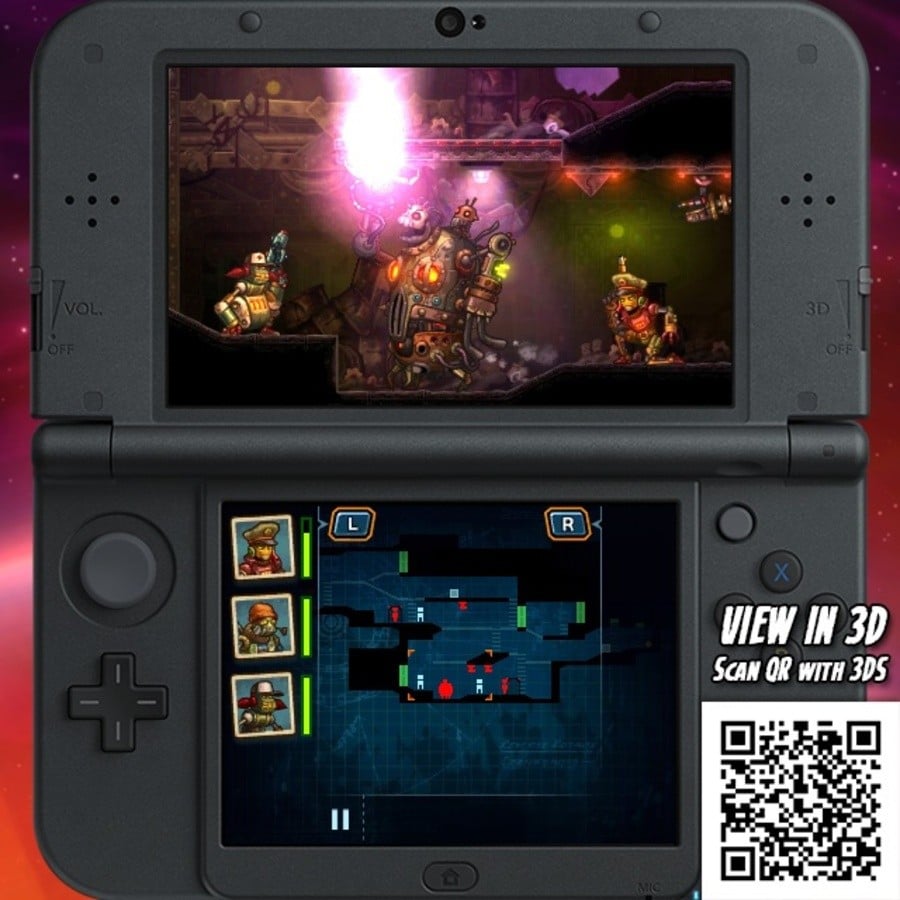
Has working extensively on 3DS been a particular challenge, or alternatively has it played into the studio's strengths?
The lack of raw power from the 3DS's is always a challenge for us. We need to compete on visuals with other modern console games, and still make it scale well to the 3DS. It does provide the benefit that we seldom see any performance issues when we port the game to other platforms.
Working across platforms - for example 3DS, Wii U and various consoles - can you explain how your team manages this process?
Compared to the main production, ports are straightforward. We've historically done one port at a time, putting in as much resources as required, while the rest of the team works on the next game. After the ports of SteamWorld Dig, we have most of the tech stuff in place for our target platforms. Most of the porting work on Heist will be to remake all menus and UI so it fits well and feels good on the other platforms.
In terms of the 3DS release, have you always felt comfortable with the schedule, or has there been a lot of 'crunch' development time to get it finished?
After missing our initial deadline with months of work left, we ramped up a bit. We prefer to do a "slow-crunch" over several months, adding an hour or so a day over a long time. This makes more sense to us than the classic mega-crunch through the end of the production.
It got more intense during the last couple of months, to fit the game in on Nintendo's release schedule. We can be smart about our own deadlines, but not when we get external ones. Sometimes, crunch is inevitable. All in all, it was the most crunch-intensive project I've worked on at Image & Form, but not nearly as bad as in some of my earlier days as a developer.
Overall, how would you describe your feelings as development progresses onto producing ports for other platforms?
I'm incredibly excited to see how Heist will be received, of course! I'm less worried this time, compared to the release of Dig to a crowd of about zero fans. Disregarding a tiny risk of bias, I can proudly state that SteamWorld Heist looks gorgeous, plays fantastic and is a great addition to the SteamWorld series. I think you'll love it.
Brjann Sigurgeirsson on Marketing and Promoting SteamWorld Heist
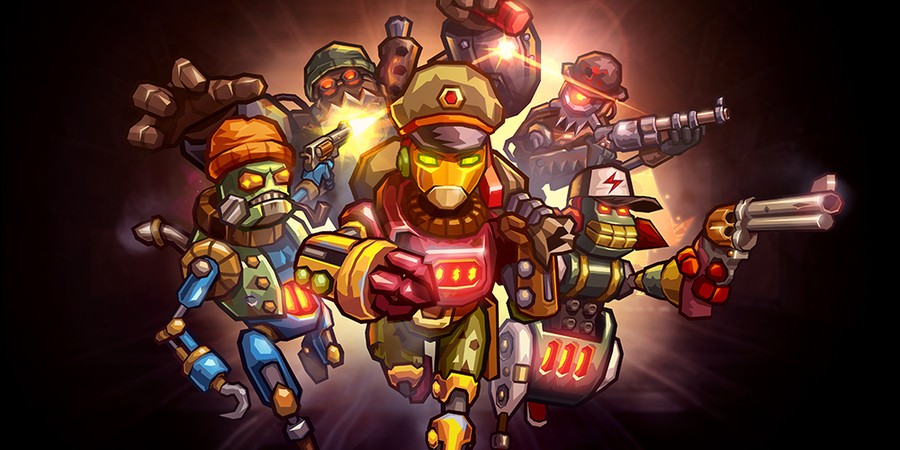
Throughout 2015 you've published various contests and updates through your website and YouTube channel, in particular. Have you been pleased with the response to these efforts?
Yes, the response has been very good - by now we've received thousands of entries to our contests and a lot more publicity than we could have imagined. When we launched the SteamWorld Ambassador program, as we call it, we didn't know what to expect. We feared that we were being pompous and self-centered, and we worried that people would think we now considered ourselves rock stars, forcing our new game down their throats.
I guess the fear of overextending is a Scandinavian thing; we rarely magnify ourselves, since we're afraid it's going to be frowned upon. Generally Scandinavians aren't too fond of the success of others, and so we limit ourselves. In Swedish we often use the word "lagom", which literally means "just enough for everybody". Wikipedia suggests that it translates into "enough, sufficient, adequate, just right" - something quite positive. But Scandinavians also think that "lagom är bäst" ("just enough is best"), which implies that you shouldn't let things grow out of proportion, that a well-kept lawn is better than a wild jungle. If the response to something we do is negative, it's a disaster to us: it means that what we did was inadequate. But we're also notoriously bad at receiving praise, because that means we extended beyond lagom and probably think we're something we're not.
I think all of the above is pretty insufferable. Of course "good enough" isn't adequate - extra everything all the time is adequate! Must be that I'm a genetic Icelander; Icelanders are so used to having nothing that we always want everything. But at the same time I'm Swedish enough to be slightly ashamed every time something we do goes well. Hmm... I realize I could have answered the question only with my first sentence, but maybe it's interesting to learn how a lot of people close to the North Pole function. I'm overextending here, I guess it's probably not that interesting!
How important have expos and events been for raising awareness, and how much has Nintendo assisted? For example, which events have been under Nintendo's booth, and how different an effort is it if you attend events yourselves without that overarching support?
Expos have been very useful, not only for visibility but also for gauging people's reactions and we've learned a lot. It's been a year of hectic travels: we've shown SteamWorld Heist at GDC, PAX East, E3 and Steampunk World's Fair in the US, EGX Rezzed and regular EGX in England, GX2015 in Kuwait (!), Casual Connect in Holland, Gamescom and DevGAMM in Germany, Gamelab in Barcelona, and Paris Games Week in France. Nintendo has included us on a few of those, and apart from that they've also shown SteamWorld Heist at expos in at least Italy, Benelux and Russia.
Having Nintendo in our corner is of course very important. On more than one level it means that the game is legit and sanctioned - and it makes expo life, such as meeting journos, quite simple. On the other hand, taking your game on the road yourself is very exciting. It means that the game has to stand on its own two legs, and you get to hone the message.
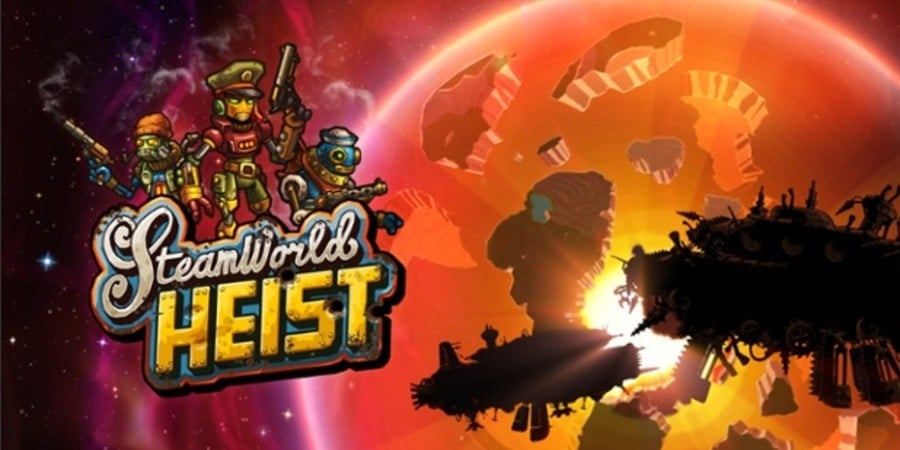
As release approaches, what key strategies have you been employing to build anticipation and excitement for Heist?
Well, we're keeping the community busy with continued contests and reveals. Particularly our community manager Julius has been key in scheduling what we talk about and when. Now we're getting good at making quick and accessible videos, blog posts, and general planning ahead. We're still relatively hellbent on doing PR and marketing without paying for ads - though we'll make some exceptions. Social media is where the people's at. I wish we were better at understanding streaming, but then again Twitch has grown into what it is while we've been working on Heist - so that's something we'll add once the game can be streamed efficiently.
What lessons have you learnt from the release of SteamWorld Dig; for example are there areas of your strategy that have been notably different for Heist?
Everything is different! In a phrase, we do it seriously now. With SteamWorld Dig I was running it pretty much single-handedly, and if you had stood over my shoulder throughout, you would have shaken your head at that PR disaster. I did everything wrong: I knew no one, spammed people on Twitter, sent ONE single press release MONTHS prior to launch. It was the equivalent of stabbing frantically in a dark room, not really knowing if there were any victims around to stab. And when the game started selling really well I got nominated for PR awards! It was very ironic, and taught us the lesson that it starts and ends with the game itself.
But we've been careful to keep the public image of who we are: a studio that above everything cares about our games. We only need to make one bad game to lose all credibility. So bad games are not in the works!
What's the most important lesson you'd pass on to other relatively small companies, based on your experiences in promoting SteamWorld Heist?
1. You can actually do PR and marketing without spending tons of cash. Be kind, be fun, be interesting.
2. Prepare for sleeplessness and initial rejection and/or indifference. Keep at it.
3. Don't expect to sell a product that isn't really good. There's probably nothing worse for peers and journalists than being accosted repeatedly by a developer who promises that his game is the best thing since sliced bread, only to find out that it's crap. It opens up for all kinds of murder, the Internet can be a vicious place when it wants or needs to.
4. If you get a success, see if you can build on it.
About the last piece of advice:
We've made SteamWorld an open place where all kinds of games can fit. That brings an enormous sense of freedom - SteamWorld can probably encompass any game we want to make at any given time. SteamWorld Heist wasn't necessarily a SteamWorld game from the very start, but it seemed like good business sense to incorporate the robots into the game: a lot of people know what SteamWorld is, far less know who Image & Form are.
Later on we also realised that it made good artistic and moral sense: shooting robots with pieces flying everywhere is not only satisfying, it's also "OK". You're actually blowing up or firing into cartoonish heaps of metal, which means we don't have to test people's boundaries for violence. I remember watching a Metal Gear Solid V trailer at Gamescom, and I thought "Damn, that's really violent. Does the violence have to be this graphic?" A Konami guy walked over and we talked about it for a bit. He explained that it's hard these days to make a violent photorealistic game without gore: the graphics cards are just too good, pixelated blood would look weird, and so on. We wouldn't have been able to - and we wouldn't have wanted to - blow humans to pieces in the same way. Flesh and blood rather than metal and oil would obviously have turned SteamWorld Heist into a radically different game.
Brjann Sigurgeirsson on Fan's Reactions to the Game and His Hopes for Release
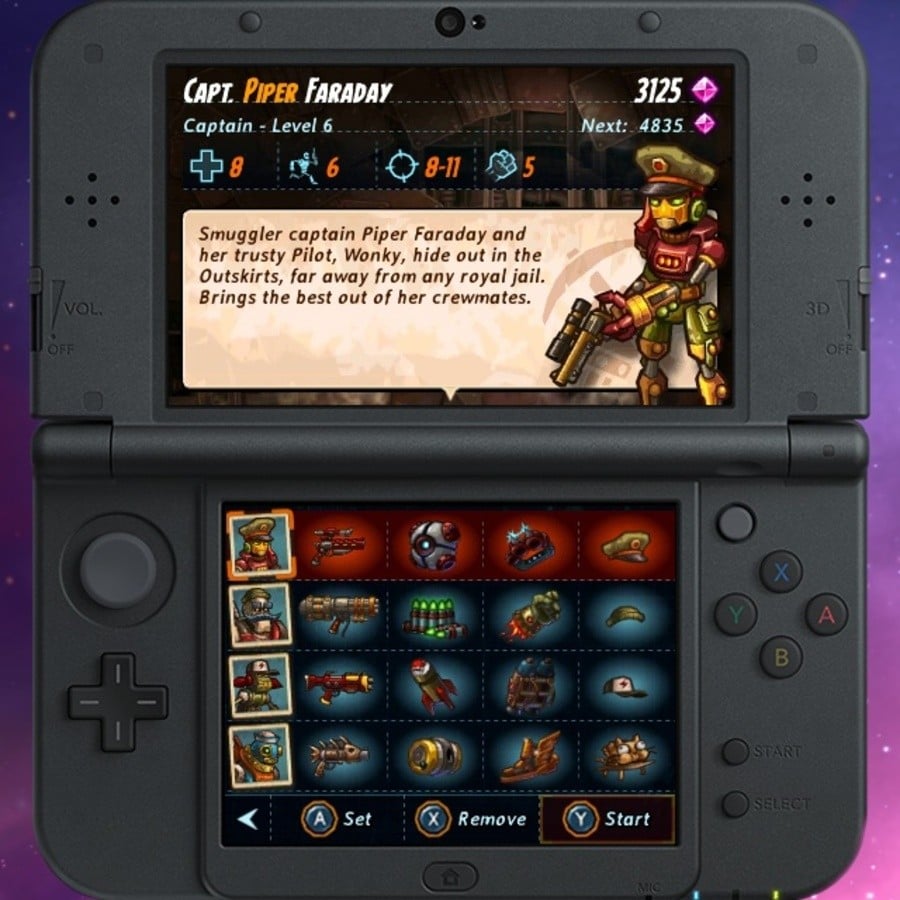
SteamWorld Dig seemed to gain a lot of hype and momentum before it was released. How would you compare the reaction to Heist, from your perspective?
Well, we decided to do everything differently this time: let people know well in advance what we're working on, and take it from there. This means that with SteamWorld Heist we'll accelerate the hype from an existing "awareness plateau" rather than coming from nowhere. And it's fascinating: based on what they've seen so far, the community is already discussing who their favourite characters are and so on. Since it's so much bigger, there's much more to reveal about Heist than Dig - and we've had to put a lid on ourselves from time to time, to not give away too much before launch.
You've said in the past that Dig had to come out when it did due to the company running out of resources (money). Though I appreciate details won't be given, can you talk about whether there's a similar degree of pressure with Heist, or if the situation for Image & Form is now a little different?
The pressure is both higher and lower this time:
In terms of money we've again decided to bet the farm; everything we've made from SteamWorld Dig has gone into making SteamWorld Heist. Although we're still a quite small studio at 17 people, we're definitely a bigger and more expensive outfit than when we made Dig. But Heist isn't the same reckless gamble. Looking back at the relative mountain of money I borrowed for us to complete Dig, my best conclusion is that I must have been suicidal at the time! We're also in a different spot now, having acquired a bit of notoriety: we get quite a lot of "instabuy" and "day one purchase" comments, something we definitely did not have with Dig. Plus we now KNOW that we can make really good games. So that's more relaxed.
On the other hand, one of the prerequisites of Heist was that it had to be bigger than Dig in every direction - we never want the simplistic "on the short side" con again - without becoming boring and/or grindy. Olle and the rest of the guys came up with the Heist concept a few months after Dig was released, and it was really quite a relief when he presented it. We could drop everything else and start on this - by our standards - very big effort. It would have been strange and awkward to follow up on Dig with something smaller. So in a sense, the pressure is higher than ever: we have wanted to create - and people are expecting - something much bigger than Dig.
I guess I must be suicidal again, because I'm lovin' it. Or I'm just very eager to show this game that we're so proud of.
Have you had many moments in which you've wondered whether the 'easy' option of Dig 2 should have been taken on, or has that not been in your thoughts?
Yes, the thought was there immediately when we saw that SteamWorld Dig was selling well. But we came from a work-for-hire background, where we spent years making games in the same, rather unchallenging edutainment franchise. It was financially sound, but in terms of creativity it was anything but thrilling. Making Dig 2 right after Dig would have pigeonholed us as "that mining-game studio, you know, the ones without the crafting." I think it would have been hard to diversify if we didn't do it right away.
We wanted to do something else, but we also wanted to explore SteamWorld more. It's extremely likely that there'll be a game that fills the gap between Dig and Heist, but we had our reasons for keeping that one brewing. SteamWorld Heist was the game that we wanted to make, and Dig provided the luxury to start making exactly that.
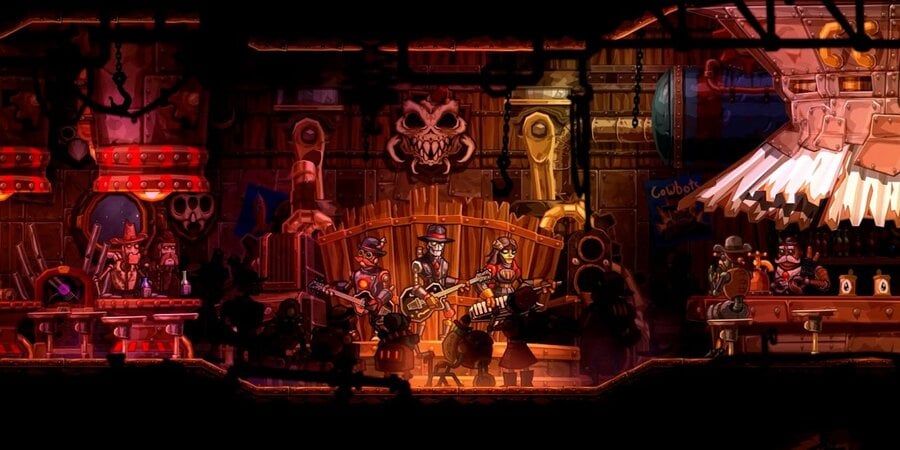
How optimistic are you, at this stage, that SteamWorld Heist will prove to be another notable success for Image & Form?
Success can mean a lot of things. For one thing, I hope the game will be judged by what it is, not by who made it. I'll explain:
Although many of the best games I've ever played are labelled as "indie games", I don't want the safety net that comes along with being an "indie studio". I don't want players to forgive us for making games that are less than stellar on the grounds that we're not obliged to have the manpower or expertise to make hands-down great games. In short, I hope we never get to hear someone say "Yeah, that's a great game... for an indie studio."
Being "indie" can be forgiving and hampering at the same time, not the least in terms of business. Indie studios can get a lot of credibility that bigger studios can only dream about, but on the other hands it's generally not cool for us - or rather, we don't allow ourselves - to charge as much as we think is fair for our games, even if the experience is just as good as a bigger-name game. And so we limit ourselves. Well, SteamWorld Heist is going to cost more than SteamWorld Dig - simply because the value is going to be many times higher.
Very un-Swedishly, I'm confident that SteamWorld Heist is one of the best games ever made. Personally, I think that notion takes a lot of pressure off us - from a legacy standpoint, we've now got it made. We've made a game that isn't a bagatelle or a grand, fluffy idea that doesn't deliver on its promise. SteamWorld Heist is simply a tight, fantastic game. The game will be a delightful surprise to everyone who doesn't already suspect what we're capable of.
So to summarize: yes, I truly think that SteamWorld Heist deserves to be a bigger commercial hit than SteamWorld Dig. It will be interesting to see if there's a cap to what gamers are prepared to pay for an "indie game" (as if you could bundle so many different efforts into one phrase like that). And I'm optimistic about that: I think people want to play great games. I'm also glad we're coming out on a Nintendo platform first (again), because to me and many others, Nintendo has always been synonymous to quality video games.
To us, SteamWorld Heist is already a success: it's a game that has never been made before, and we've dared to let ourselves take the time needed to shape it into something that is beautiful, rich, funny, varied, long, immersive, emergent, gritty and - in these times, can you believe it - stable. I'm very proud that we were the ones to make it, and we're as excited for the game as Swedish people can allow themselves to be.
We'd like to thank both Brjann and Olle for their time.
Comments 15
Really glad they went with this direction. Dig 2 would've been too easy.
It's a fantastic game, and for someone like myself who loves turn based games, it is almost perfect. Of course, when I can play it on my Wii U, it will be perfect.
I sincerely hope it sells well across all platforms as it releases because I'm excited to see what we get next from Image & Form
Thanks for all these insights, a really interesting read! And judging by the screenshots and vids already shown, the amount of work and dedication that went into Heist is enormous! I'm quite impatient to dive into Steamworld, all the while hoping the game will get the success it so obviously deserves!
And the guys from Image&Form sound really nice too.
Very excited for this game And i absolutely love the way Brjann talks! He's so honest and genuine it's hard not to respect him! Can't wait for thursday
"Yeah , that's a great game... from ANY kind of studio!"
These are words I hope to hear people saying on launch day. Looks like this game really is shaping up to be an awesome experience!
Interesting read
I remember buying Dig a few minutes after it appeared on the eShop and buying it on a hunch it would turn out good. Well... It turned out to be one of my favorite games of the past 10 years and if Heist is half as good as Dig is, I won't regret buying it day 1.
I do think these guys have it in them to make a fun and engaging sequel to Dig if they really want to And I'll be there waiting with my wallet if they do!
Also, Brjann is a genuinely nice guy (with an added bonus of being really cute haha :3) who radiates passion for his work, the industry needs more people like him
Spent everything they made from Dig sounds a bit of a nightmare. That game sold like hotcakes.
This game looks incredible. The direction they took shows how talented they really are. Maybe one day they will be able to take the Steamworld franchise into 3D like what happened to Popcaps Plants Vs. Zombies.
"We only need to make one bad game to lose all credibility. So bad games are not in the works!"
I like these guys. And they can count on me for one copy sold- 2 when it releases on Wii U
I was so excited for this game. I absolutely loved Dig.
But the timing is AWFUL. after a year with long stretches of nothing to play I now have a list of around 5 other games to choose from, two of which I'm already playing.
I'll get it eventually though.
"Damn, that's really violent. Does the violence have to be this graphic?"
Love the guy, just for this. It takes courage to say it, these days.
Great interview. I remember getting Steamworld on sale as a punt (and the great reception it had!) from then on I decided that great games deserved to be bought at a decent price, so this'll be a buy on Thursday. Of course he's right though and with such an attitude fans have they have to release good games if people are going to take such risks. Bring on the best day in eshop history!
What a great interview! Brjann really knows how to sell himself and Image&Form. So open and honest in his answers and the little insights he gives in the studio.. Loved it.
Sounds great. I'll be waiting for the PlayStation release (PS-Vita) and hopefully it is cross-buy so I can also play it on PS4 if I feel like it.
Show Comments
Leave A Comment
Hold on there, you need to login to post a comment...